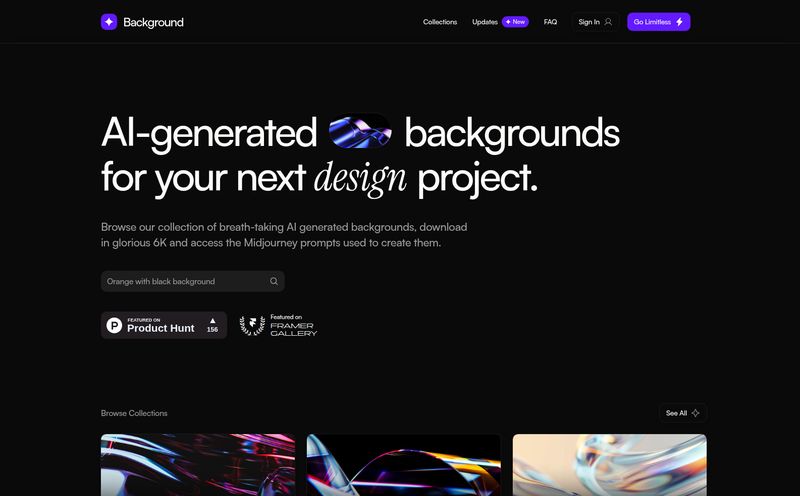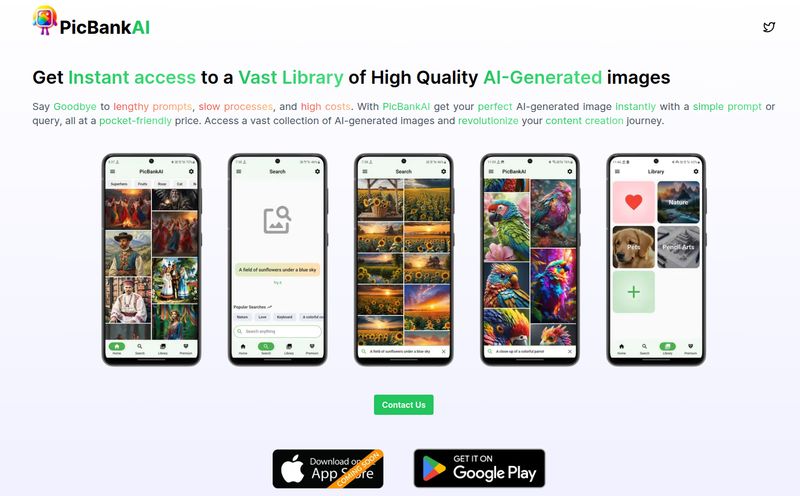Alright, let’s talk. You and me. If you’re anything like me, you’ve spent more than a few late nights staring at a blank prompt box in Midjourney or Stable Diffusion, feeling the creative well run bone dry. You know what you want to see—that perfect blend of Moebius linework and a neon-drenched, Blade Runner aesthetic—but the words just… aren’t there. You type, you delete, you type again. The results are fine, but they lack that certain spark.
It’s the modern artist’s curse, isn’t it? An infinite canvas with no idea where to start. So, when I stumbled across a tool called Magic Prompt, my interest was definitely piqued. A whole platform dedicated to exploring and discovering AI image prompts? Sign me up. But my little investigation took a strange turn, leading me down a rabbit hole that says a lot about the fast-moving, often-fleeting world of AI tools.
So, What Exactly Was Magic Prompt?
Let's get one thing straight right away: Magic Prompt wasn't an AI image generator. You couldn't type in “a cat wearing a tiny crown” and get a picture back. No, its purpose was something arguably more foundational. It was a library. A museum. Maybe the best analogy is a sommelier for creative concepts.
Its entire reason for being was to help you find the perfect string of words—the perfect prompt—to feed into other AI art generators. Think of it like a Pinterest board, but exclusively for the text that creates the images. You could browse, search, and get inspired by the intricate prompts that lead to breathtaking results. A simple idea, but a powerful one for anyone tired of getting generic-looking AI art.
The Spark of a Brilliant Idea
I have to hand it to them, the concept behind Magic Prompt was spot-on. It wasn't just a random list of prompts; it was built on a few clever features that showed a real understanding of the creative process.
Searching by Vibe, Not Just Keywords
This was the big one for me. The platform apparently let you search based on artistic style. That’s a game-changer. Instead of guessing which keywords might give you a 'vaporwave' feel, you could theoretically just look for that style. It removes a massive layer of frustrating guesswork. We’ve all been there, trying to describe a visual 'vibe' with words is tough. It's like trying to explain the taste of water. Magic Prompt aimed to bridge that gap.

Visit Magic Prompt
Just look at the sheer variety on display. It wasn't just one style, it was a whole spectrum of possibilities, from photorealistic portraits to abstract explosions of color. It was a visual feast meant to get your own ideas flowing.
The Creative Rabbit Hole
Another smart feature was the ability to find similar prompts. You'd find a prompt you kind of liked, and the tool would show you others like it. This is how real creativity works! You start with a core idea and then you iterate, you tweak, you explore adjacent possibilities until you land on something uniquely yours. It’s a feature that turns a simple search into a genuine creative journey.
And from what I can gather, it seems the tool was free. There's no pricing page, no mention of subscriptions. In a world where every cool new AI tool seems to have a three-tiered pricing plan, a free resource for the community is always a welcome sight.
The Reality Check: Where Things Got Murky
Of course, no tool is perfect. And from the outside looking in, Magic Prompt had a few things that gave me pause. For one, it was a library, not a workshop. You’d find your golden prompt, but you still had to copy it, open another program, paste it in, and then run your generation. It’s an extra step. Not a deal-breaker by any means, but a bit of friction in the workflow.
The descriptions also seemed a bit general. A fantastic prompt is more than just a list of nouns and adjectives; sometimes it includes camera angles, lighting specifics, artist names, and even instructions on what not to include (the classic negative prompt). It’s unclear how deep the database really went.
The Elephant in the Room: That 404 Error
Here’s where the story gets weird. If you try to find Magic Prompt now... you can't. The URL leads to a stark, white “Not Found” page. A digital dead end.
Poof. Gone.
What happened? Was it a passion project that the creator couldn't maintain? Did it run out of funding? Maybe it was acquired by a bigger company and quietly shuttered, its best ideas absorbed into another platform. We might never know. It’s a classic tale in the tech world, especially in a gold rush like the current AI boom. Tools appear overnight, shine brightly for a moment, and then vanish without a trace. It’s a reminder that the digital ground beneath our feet is constantly shifting.
This is why, as much as I love discovering new, shiny tools, I often find myself returning to more established, community-driven platforms like Lexica or OpenArt. They have a bit more staying power.
Why the World Still Needs More 'Magic Prompts'
Even though the tool itself seems to be a ghost, the idea behind it is more important than ever. The truth is, “prompt engineering” is becoming a genuine skill, but not everyone wants to be an engineer. Some people just want to be artists. Tools like Magic Prompt act as a bridge.
They democratize creativity, breaking down the barrier between a brilliant idea and a brilliant execution. They also fight against what I call the “AI art style monoculture.” When everyone uses the same basic prompts, all the art starts to look the same. Prompt discovery engines expose us to new combinations, new artists to reference, and new stylistic paths to wander down. They keep the ecosystem fresh and weird and wonderful.
So while Magic Prompt may be gone, I hope more developers and creators pick up the torch. We need more libraries, more sommeliers, more digital muses to help us navigate this incredible new world of AI art.
Frequently Asked Questions about AI Prompt Tools
What is an AI prompt discovery tool?
It's a website or application that doesn't generate AI images itself, but instead provides a searchable database of prompts. It’s designed to give you inspiration and show you the text commands that lead to specific artistic styles or subjects, which you can then use in generators like Midjourney or DALL-E 3.
Is 'prompt engineering' a real job?
Surprisingly, yes! As AI becomes more integrated into business and creative fields, companies are hiring people specifically to craft and refine prompts to get the best possible output from AI models. It’s a weird new career path, but it's very real. Some folks are making a pretty good living doing just that.
What are some good alternatives to Magic Prompt?
Since Magic Prompt is offline, two of the most popular and robust alternatives are Lexica.art and OpenArt.ai. Both offer massive, searchable galleries of AI-generated images along with their corresponding prompts, and have strong community features that keep them constantly updated.
Why are negative prompts important?
A negative prompt tells the AI what you don't want to see. It’s incredibly useful for cleaning up images. For example, if you're getting images with distorted hands, you could add `--no extra fingers, deformed hands` to your prompt. It helps you steer the AI away from common mistakes and get a more polished result.
Final Thoughts on a Fleeting Idea
So, here’s to Magic Prompt. A ghost in the machine, a great idea that may have been a little ahead of its time or just a victim of circumstance. While the tool itself is gone, its spirit lives on. It represented a solution to a real problem: the blank page. The creative block.
It’s a reminder that sometimes the most helpful tool isn’t the one that does the work for you, but the one that gives you the inspiration to do it yourself. Now if you’ll excuse me, I’ve got a few new prompt ideas I need to go try out.



